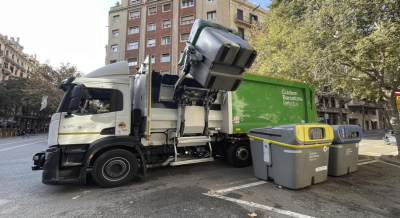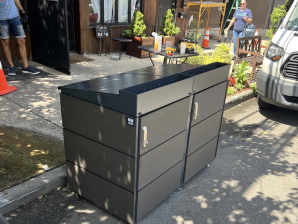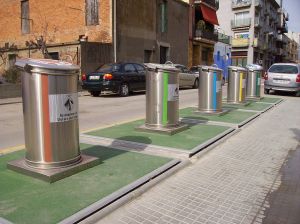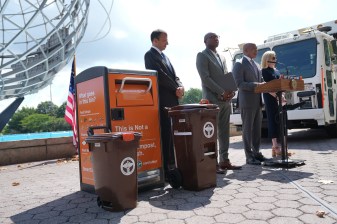Clean Curbs Pilot ‘Not Scalable’ Citywide, Says DSNY Commish
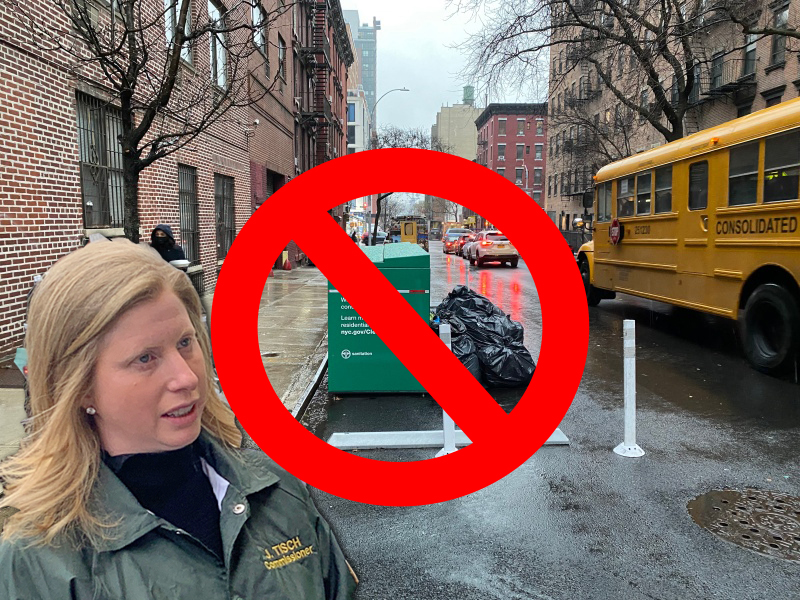
The Department of Sanitation’s test project to containerize trash pickup on one residential block won’t work on a citywide level, the agency’s chief said on Wednesday, so New York’s Strongest will need a better strategy to clear Big Apple sidewalks of their notorious rubbish mountains.
DSNY Commissioner Jessica Tisch said the pilot on W. 45th Street, between Ninth and 10th avenues in Hells Kitchen, took a lot of resources and bags still end up outside the bins — even when the receptacles aren’t full.
The agency wants to find more options once it publishes a much-anticipated waste containerization study in the coming weeks, Tisch said, for which officials hired consultants McKinsey for $4 million.
Locals praised the project for making the sidewalks clear and keeping away rats, but the DSNY chief said it would not be the way the city eventually does containerization.
“Despite consistent education and outreach efforts, there is regularly waste placed outside of the containers every day of the week,” Tisch said at a Council budget oversight hearing. “This is an incredibly resource-intensive pilot, and this approach is not scalable beyond its current scope.”
Late last year, New York’s Strongest and its contractor CITIBIN set up six sets of seven green containers along the street that are shared by several buildings — and which only Sanitation and superintendents are supposed to access via locks.
DSNY also worked with 19 business groups to set up containers for commercial trash, but Tisch said those have been easier manage than the small residential version, because business improvement districts have staff to take care of them.
One expert agreed with the commissioner, saying the pilot showed you could move the bags out of the way of pedestrians, but there are more efficient ways for collecting garbage that don’t still rely on workers hauling bags by hand into collection trucks.
“From the beginning, I thought that it’s not ‘containerization,’ it’s ‘bags in enclosures,'” said Clare Miflin, an architect and the founder of the Center for Zero Waste Design. “The pilot was successful in showing you can get bags off sidewalks.”
More details for potential paths forward could come from agency’s soon-to-be-released waste containerization report, lays out some of the challenges New York City will have to overcome to achieve better collections like other cities have been doing for decades.
“I really hope that they are going to come out with a real plan,” said Miflin. “I think the mayor really cares about clean streets.”
Tisch called the effort “one of the most complicated infrastructure projects” for the city in the coming decade.
“It is not as easy as putting a dumpster on a street. It is doable, but it’s hard,” she said.
DSNY will need new trucks that can hoist bins along with more frequent collections than its current rates of two to three times a week. Other cities around the globe where it works pick up their garbage once or even twice a day, Tisch said.
“Given the mountains of trash we have today in New York City, you could make a gigantic container, it won’t be big enough for the mountains unless we increase our service levels,” she said.
Most important, they will also have to approach the third rail of repurposing parking spaces.
“What are the implications for parking, is there even enough curb space in New York City to be able to accommodate the number of bins that are required?” Tisch said.
On W. 45th Street, Streetsblog found about a month into the pilot that the bins kept the sidewalk blissfully clear of the usual mounds of black garbage sacks New Yorkers have to weave around on the eves of collection days.
Bags did pile up outside some of the containers — between around two to a dozen per pod at most during our January and February inspections — but they were still in the curb and not on the foot path.
Residents at the time said there should be more bins to meet demand, and DSNY later added two more boxes per pod, increasing the total from 42 to 54 on the block.
Other cities with containers like Barcelona also have trash next to them sometimes, according to Sanitation officials.

However, some locals questioned Tisch’s claims about bags accumulating outside half-empty bins, saying they were in the curb when the bins were full.
“No, that’s baloney,” said Gregory McNally, a super on the block of 46 years. “They’re mad because they have to open them up and take them. That’s the whole thing.”
It took a pair of Sanitation workers about 30 minutes to clear the block in February, compared to the 15-20 minutes on a regular street, because they have to open and close the locked bins rather than just hurl the bags straight from the curb.
The pilot, which will run through the end of the year, has been a major boon for the block, McNally said, noting a key selling point that could appeal to Mayor Adams.
“I don’t find no more rats in the basement anymore — nothing — ever since they have been put up. The rats took off to North Carolina!” the super said. “It’s been the greatest thing that has happened to the block.”


